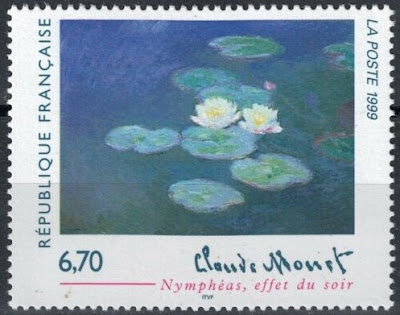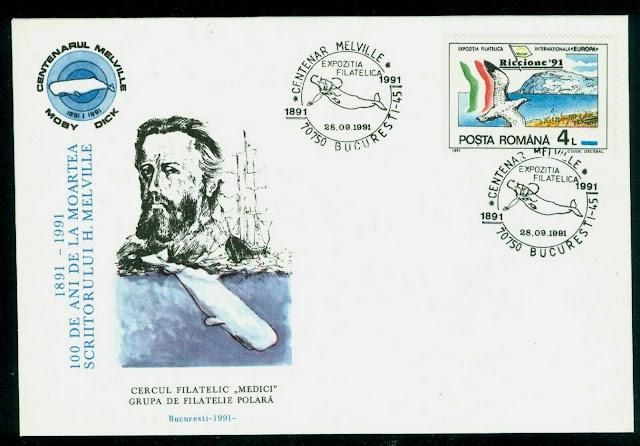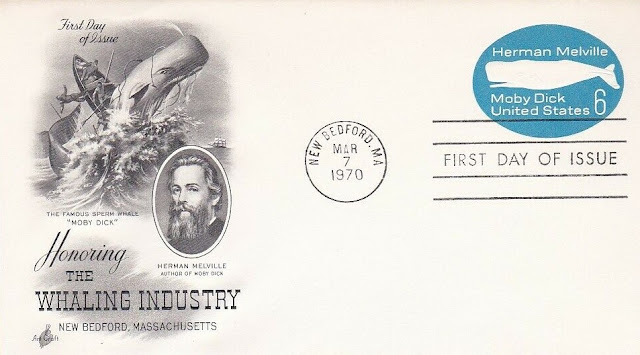1840 Born Claude Monet, French painter (d. 1926)
Oscar-Claude Monet (14 November 1840 – 5 December 1926) was a French painter, a founder of French Impressionist painting and the most consistent and prolific practitioner of the movement's philosophy of expressing one's perceptions before nature, especially as applied to plein air landscape painting. The term "Impressionism" is derived from the title of his painting Impression, soleil levant (Impression, Sunrise), which was exhibited in 1874 in the first of the independent exhibitions mounted by Monet and his associates as an alternative to the Salon de Paris.
Monet's ambition of documenting the French countryside led him to adopt a method of painting the same scene many times in order to capture the changing of light and the passing of the seasons. From 1883, Monet lived in Giverny, where he purchased a house and property and began a vast landscaping project which included lily ponds that would become the subjects of his best-known works. In 1899, he began painting the water lilies, first in vertical views with a Japanese bridge as a central feature and later in the series of large-scale paintings that was to occupy him continuously for the next 20 years of his life.
Stamps from Monaco and France depicting Monet's works
1851 – Moby-Dick, a novel by Herman Melville, is published in the USA.
Moby-Dick; or, The Whale is an 1851 novel by American writer Herman Melville. The book is sailor Ishmael's narrative of the obsessive quest of Ahab, captain of the whaling ship Pequod, for revenge on Moby Dick, the giant white sperm whale that on the ship's previous voyage bit off Ahab's leg at the knee. A contribution to the literature of the American Renaissance, the work's genre classifications range from late Romantic to early Symbolist. Moby-Dick was published to mixed reviews, was a commercial failure, and was out of print at the time of the author's death in 1891. Its reputation as a "Great American Novel" was established only in the 20th century, after the centennial of its author's birth. William Faulkner said he wished he had written the book himself, and D. H. Lawrence called it "one of the strangest and most wonderful books in the world" and "the greatest book of the sea ever written". Its opening sentence, "Call me Ishmael", is among world literature's most famous.
Melville began writing Moby-Dick in February 1850, and finished 18 months later, a year longer than he had anticipated. Writing was interrupted by his meeting Nathaniel Hawthorne in August 1850, and by the creation of the "Mosses from an Old Manse" essay as a result of that friendship. The book is dedicated to Hawthorne, "in token of my admiration for his genius".
The basis for the work is Melville's 1841 whaling voyage aboard the Acushnet. The novel also draws on whaling literature, and on literary inspirations such as Shakespeare and the Bible. The white whale is modeled on the notoriously hard-to-catch albino whale Mocha Dick, and the book's ending is based on the sinking of the whaleship Essex in 1820. The detailed and realistic descriptions of whale hunting and of extracting whale oil, as well as life aboard ship among a culturally diverse crew, are mixed with exploration of class and social status, good and evil, and the existence of God. In addition to narrative prose, Melville uses styles and literary devices ranging from songs, poetry, and catalogs to Shakespearean stage directions, soliloquies, and asides.
In October 1851, the chapter "The Town Ho's Story" was published in Harper's New Monthly Magazine. The same month, the whole book was first published (in three volumes) as The Whale in London, and under its definitive title in a single-volume edition in New York in November. There are hundreds of differences between the two editions, most slight but some important and illuminating. The London publisher, Richard Bentley, censored or changed sensitive passages; Melville made revisions as well, including a last-minute change to the title for the New York edition. The whale, however, appears in the text of both editions as "Moby Dick", without the hyphen. One factor that led British reviewers to scorn the book was that it seemed to be told by a narrator who perished with the ship: the British edition lacked the Epilogue, which recounts Ishmael's survival. About 3,200 copies were sold during the author's life.
Covers issued by the United States and Romania to commemorate Moby Dick
1892 Died: Louis Nicolas Vauquelin, French pharmacist and chemist (b. 1763)
Prof Louis Nicolas Vauquelin (16 May 1763 – 14 November 1829) was a French pharmacist and chemist. He was the discoverer of both chromium and beryllium.
Contributions to chemistry
At first his work appeared as that of his master and patron, then in their joint names; in 1790 he began to publish on his own, and between that year and 1833 his name is associated with 376 papers. Most of these were simple records of patient and laborious analytical operations, and it is perhaps surprising that among all the substances he analysed he only detected two new elements, beryllium in 1798 in beryl and chromium in 1797 in a red lead ore from Siberia. He also managed to get liquid ammonia at atmospheric pressure. Later with Fourcroy, he identified a metal in a platinum residue they called ‘ptène’, This name ‘ptene’ or ‘ptène’ was reported as an early synonym for osmium.
Either together or successively he held the offices of inspector of mines, professor at the School of Mines and at the Polytechnic School, assayer of gold and silver articles, professor of chemistry in the College de France and at the Jardin des Plantes, member of the Council of Industry and Commerce, commissioner on the pharmacy laws, and finally professor of chemistry to the Medical Faculty, to which he succeeded on Fourcroy's death in 1809. His lectures, which were supplemented with practical laboratory teaching, were attended by many chemists who subsequently attained distinction.
A lesser known contribution and finding of his included the study of hens fed a known amount of mineral. "Having calculated all the lime in oats fed to a hen, found still more in the shells of its eggs. Therefore, there is a creation of matter. In that way, no one knows."
Final achievements, days and legacy
From 1809 he was professor at the University of Paris. In 1816, he was elected a foreign member of the Royal Swedish Academy of Sciences. He was elected to the Chamber of Deputies in 1828. In 1806, working with asparagus, he and Pierre Jean Robiquet (future discoverer of the famous red dye alizarin, then a young chemist and his assistant) isolated the amino acid asparagine, the first one to be discovered. He also discovered pectin and malic acid in apples, and isolated camphoric acid and quinic acid. His death occurred while he was on a visit to his birthplace.
Among his best known works is "Manuel de l'essayeur" (Manual of the assayer).
The plant genus Vauquelinia is named in his honor, as is the Vauquelin, an egg white foam associated with molecular gastronomy, and the mineral vauquelinite, discovered at the same mine as the crocoite from which Vauquelin isolated chromium.
French stamp depicting Vauquelin
The First Czechoslovak Republic (Czech: První československá republika, Slovak: Prvá česko-slovenská republika), often colloquially referred to as the First Republic (Czech: První Republika), was the first Czechoslovak state that existed from 1918 to 1938, dominated by ethnic Czechs and Slovaks, the country was commonly called Czechoslovakia (Czech and Slovak: Československo), a compound of Czech and Slovak; which gradually became the most widely used name for its successor states. It was composed of the territories of Austria-Hungary, having different system of administration of the former respective Austrian (Bohemia, Moravia, a small part of Silesia) and Hungarian territories (mostly Upper Hungary and Carpathian Ruthenia).
After 1933, Czechoslovakia remained the only de facto functioning democracy in Central Europe, organized as a parliamentary republic. Under pressure from its Sudeten German minority, supported by neighbouring Nazi Germany, Czechoslovakia was forced to cede its Sudetenland region to Germany on 1 October 1938 as part of the Munich Agreement. It also ceded southern parts of Slovakia and Carpathian Ruthenia to Hungary and the Zaolzie region in Silesia to Poland. This, in effect, ended the First Czechoslovak Republic. It was replaced by the Second Czechoslovak Republic, which lasted less than half a year before Germany occupied the rest of Czechoslovakia in March 1939.
Hradcany at Prague stamps issued in 1918 and 1919







No comments:
Post a Comment